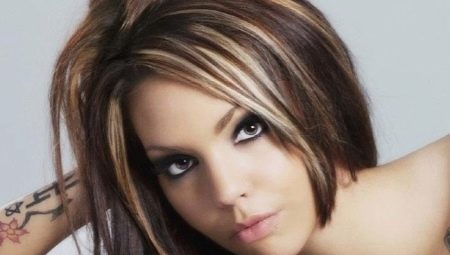For women who want to change their image, but are not ready for radical staining, the rare highlighting will be the best colorization option. This technique is safe and minimally traumatic for hair, and in its effect is not inferior to more modern types of coloring.
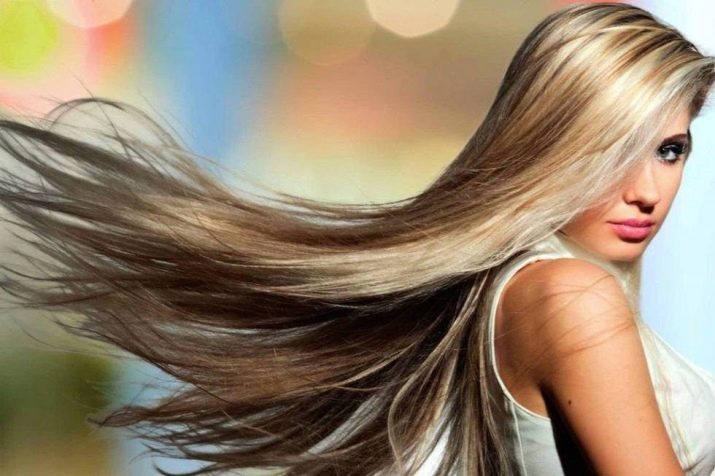
What it is?
Everyone knows that traditional highlighting covers about half of the hair, while rare highlighting affects even less, since in this case the hairdresser processes only certain parts of the hair. Accordingly, in a matter of minutes, any woman can get a more vivid image and at the same time do not cause much harm to her hair. Thanks to rare highlighting, you can:
- give strands extra volume and splendor;
- visually correct the flaws of the face shape;
- emphasize the saturation and depth of color;
- to rejuvenate the face, diverting attention from wrinkles and a floating contour to golden overflows of curls;
- imagine hairstyle in the best light.
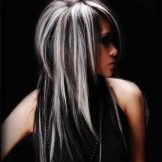
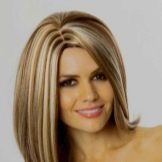
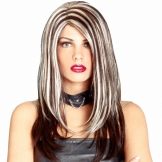
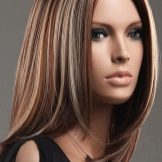
Rare highlighting is often called “feathers”, while the specialist chooses thin strands and dyes them in a contrasting color, leaving most of the head of hair unaffected. The technique has been successfully used both in short-haired women and in girls with medium and long curls.
As for the color scheme, rare highlighting can have very different shades, here the choice of tones is limited only by the wishes of the woman, however, in any case, the basis of the technique is the formation of color contrast on the strands due to the clarification of individual curls and their subsequent tinting.

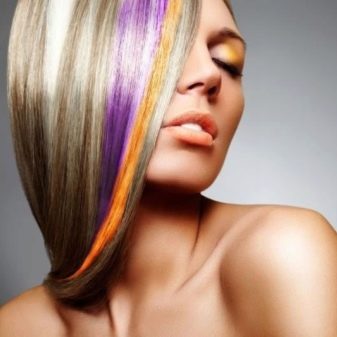
Varieties
The following short highlighting techniques are distinguished.
- Superficial highlighting of the upper hair - usually it goes well with a graduated haircut.

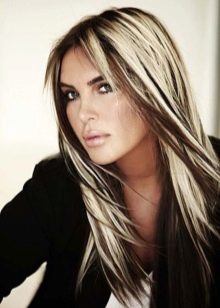

- Coloring the lower strands - this design visually creates an “internal highlight”.A similar illumination effect looks very elegant on young ladies with red and brown curls.
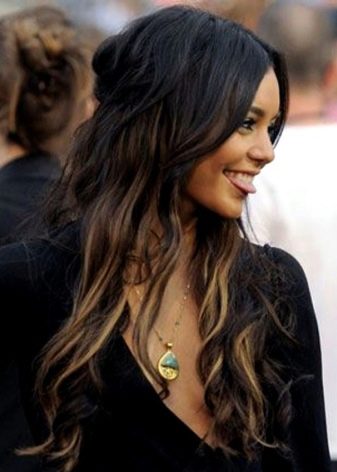
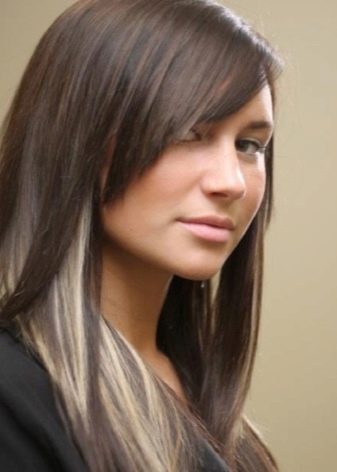
- Coloring the strands framing the face - in this case, a visual “runoff” of the shade is created, which allows emphasizing the oval of the face.
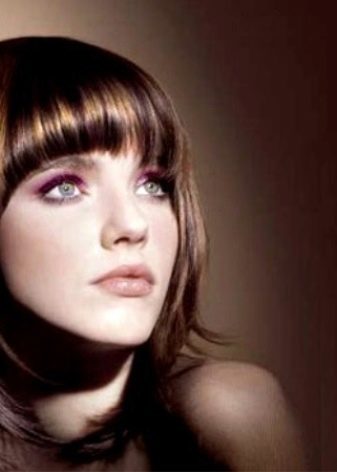
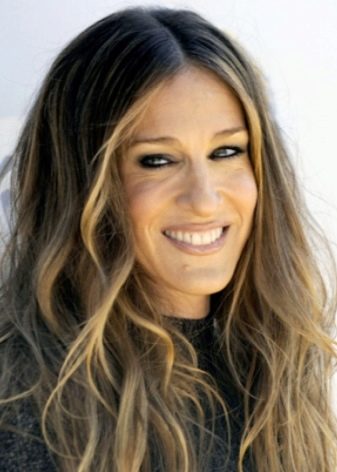
- Classic feathers - this type of coloring is used for short hair.
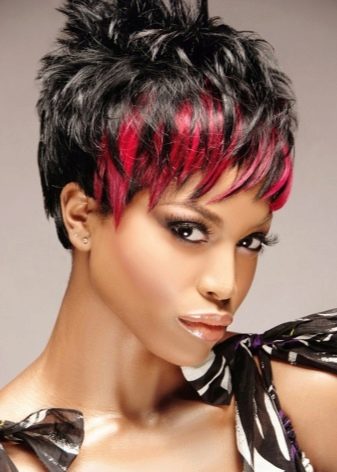
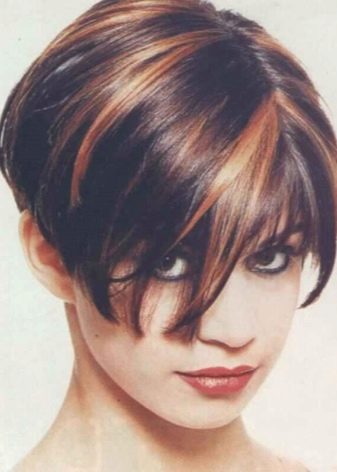
- Highlighting the tips - usually it is produced in shades as close as possible to the native color, which allows you to create the effect of strands burnt out in the sun.
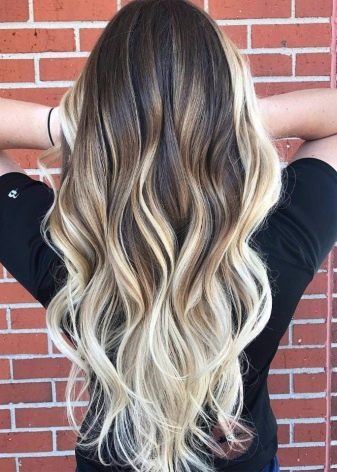
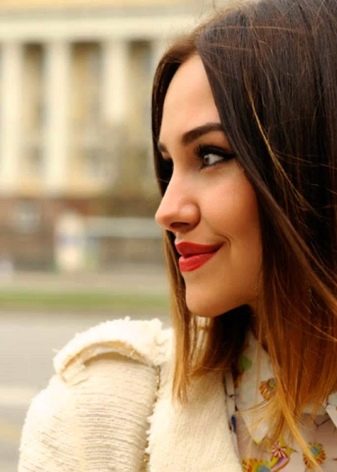
- Lightening the locks on separate sections of the head - this technique is called zonal, it is usually used for owners of asymmetric haircuts.
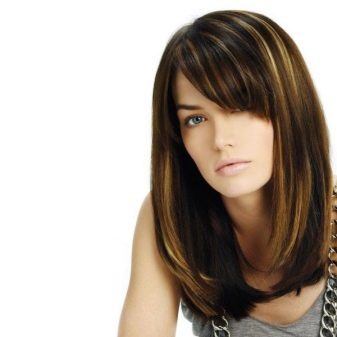
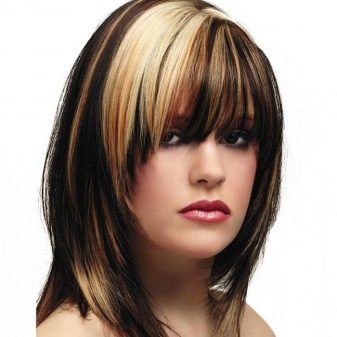
- Top of the head - this option makes the image more mischievous and flirtatious, if a haircut involves a bang, then in this version it is also captured.
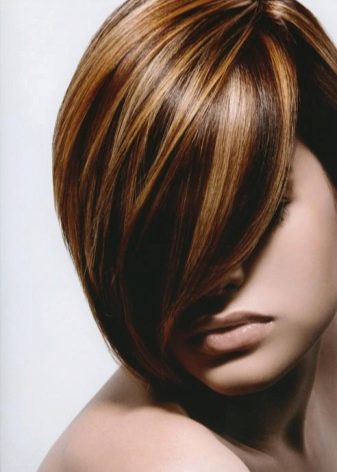
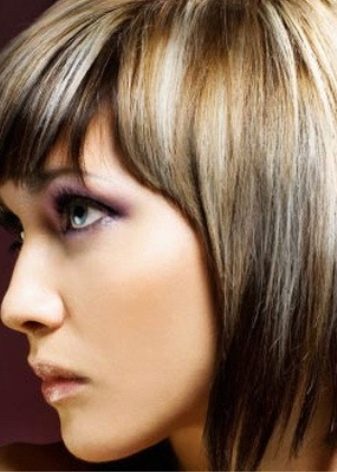
- Highlighting bangs - This is one of the basic trends of recent seasons.
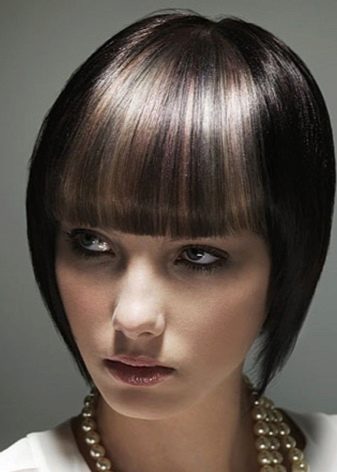
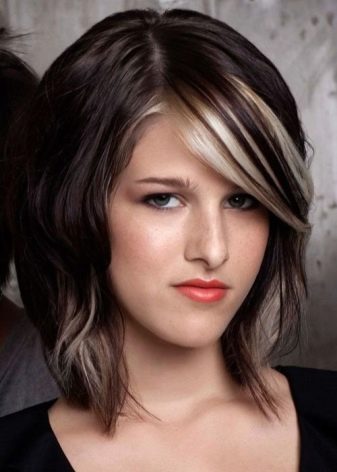
In any of the described options, dyeing captures no more than 20% of the hair.
Comparison with frequent highlights
The main "competitor" of rare highlighting is frequent. This technique has been at the peak of popularity for a decade and is not going to give up its positions. Frequent highlighting involves staining of 45-60% of curls, all other hairs are either not dyed at all or tinted with gentle compositions. This procedure is carried out using a special hat or foil. Young ladies who want to visually lighten their hair for a couple of tones resort to technology.
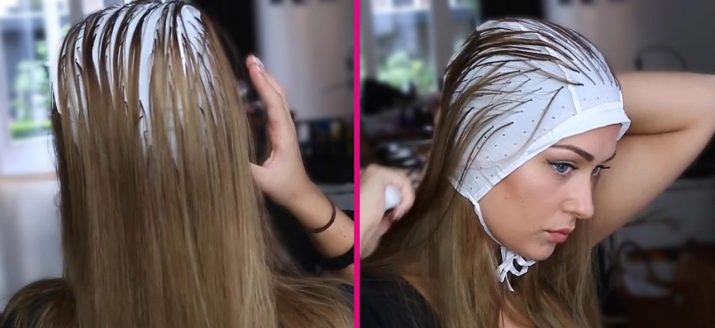
Fine highlighting has many advantages:
- effectively hides gray hair;
- changes the image without repainting the entire hair;
- allows you to restore the original color in the most gentle way in case of unsuccessful coloring.
- However, the technology also has disadvantages:
- the procedure lasts about 5 hours, and a good result is possible only when contacting an experienced master;
- Highlighting is not done on newly painted curls.
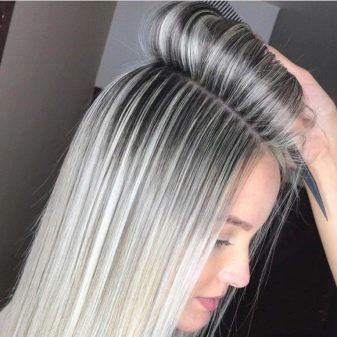
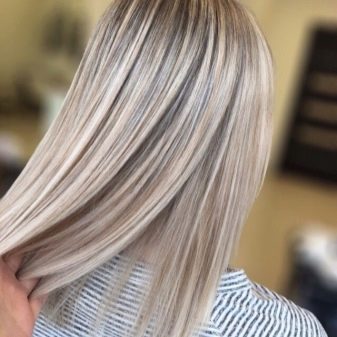
The difference between the types of highlighting is that the rare looks more expressive, since the colored strands are at a distance from each other. Thus, rare highlighting is designed to place accents rather than create overflows, as is possible with frequent highlighting. Of the advantages of technology should be identified:
- the most gentle technology - dyeing affects two times less hair than with frequent highlighting, therefore, a woman does not face the problem of brittle hair, drying out and cutting ends;
- rare highlighting, in contrast to full highlighting, does not require regular adjustment and tinting of the roots;
- does not take much time.
This color is optimal for women of any age and any hair color.
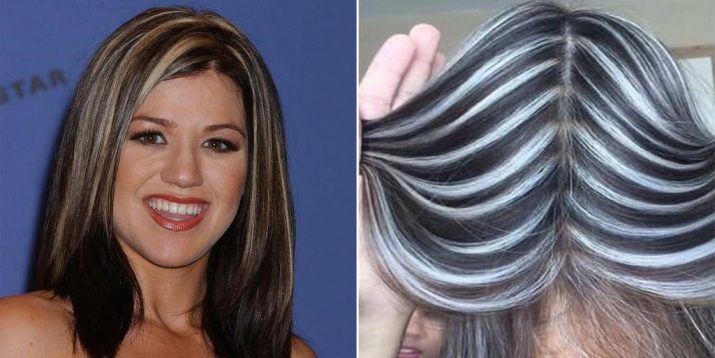
However, there are also disadvantages:
- rare highlighting is not suitable for women who have more than a third of their hair gray hair;
- it is difficult for an unprofessional master to determine the area of hair that is optimal for dyeing.
Which highlighting is best depends only on your expectations and preferences, each technique has its pros and cons, so it is important to carefully weigh the pros and cons before making the final colorization technique.
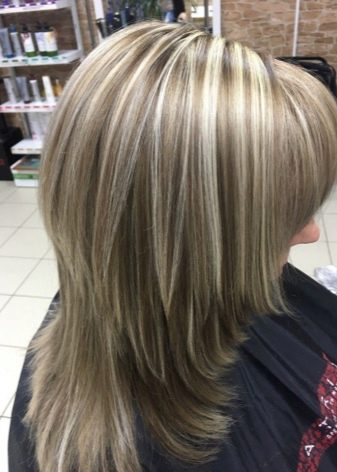
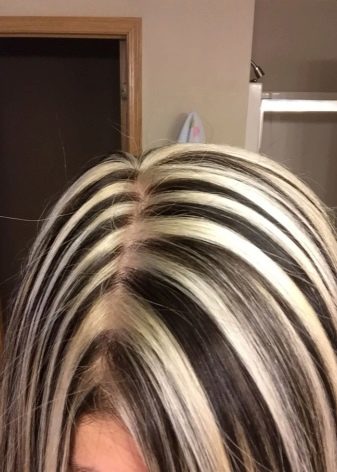
Shade selection
Choosing the right shade for rare highlighting is not an easy task, here you should take into account a whole range of factors - the color type, the native shade of the hair, the structure of the strands and the condition of the hair as a whole. Universal tones include coffee, chocolate and beige shades, walnut and golden honey are popular. These tones go well with light and chestnut curls. But for owners of black hair, eggplant, blueberry or light violet shades are suitable, but to get the most natural look it is better to stay on chocolate tones.
For the most creative girls who love to shock the audience, you can recommend emerald, blue, raspberry and lilac tones. However, keep in mind that such solutions look good only on young girls and in an appropriate environment, so it is better to carry out such staining with quickly rinsing paints.
Professionals recommend choosing a shade in accordance with the color of the eyes, hair and skin.
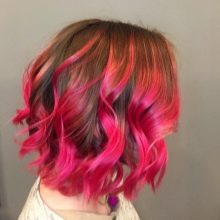
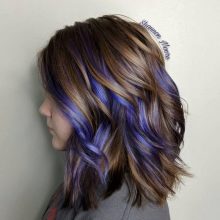
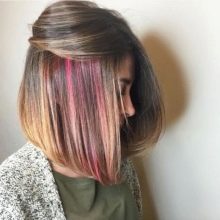
Eyes
Brown eyes are in harmony with chocolate, copper, bronze and blond highlights. To gray eyes, toning with pink and wheat shades is suitable. For blue and blue eyes, the use of caramel, honey and reddish shades will be optimal. Green eyes are very fond of copper and red tones.

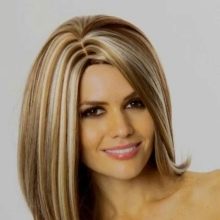

Leather
A warm skin tone looks good with warm shades on the hair, respectively, cold skin requires cold locks. But the neutral tone of the face is universal, it allows you to use any color of the strands, so here you need to focus on other parameters.
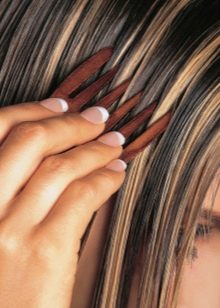
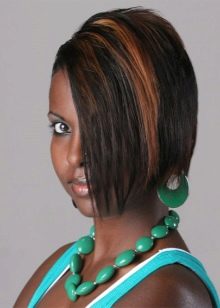
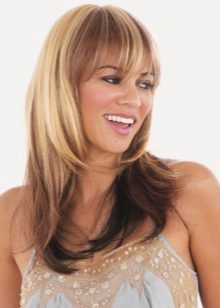
Color type
Girls with the fall and winter color type usually have dark hair, while autumn looks harmonious in caramel and red tones, and winter requires the use of honey, walnut, as well as shades of blond, cinnamon and milk chocolate. For girls with a spring and summer color type, the shade for highlighting should be selected in accordance with the color of the eyes and skin.
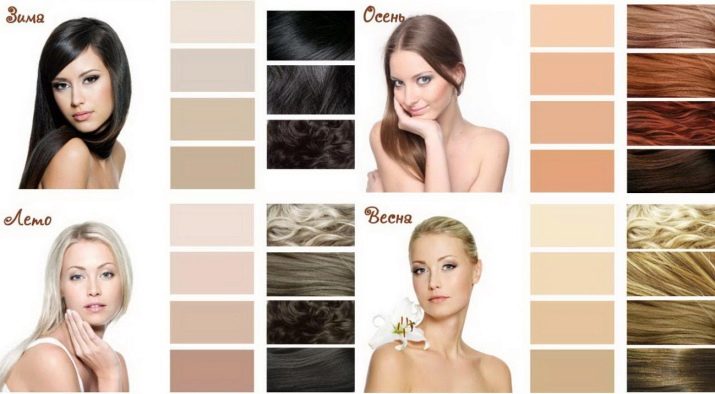
Staining technology
A rare highlighting, as already mentioned, involves staining a small number of strands of a certain thickness in any desired shade. The desired effect is achieved by using several techniques.
- Red highlighting - in this case, paint of any contrasting shade is applied to wide strands. This method is optimal for the fair sex with thick curls.
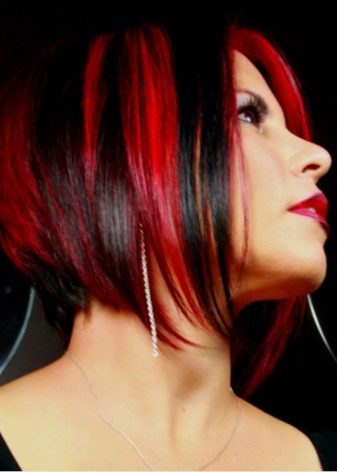
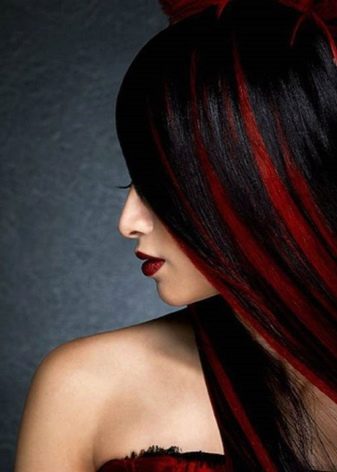
- Glare painting - On selected strands, paint is applied 1-2 tones lighter than the main hair. This effect creates an imitation of the play of sunlight on curls, usually lightened areas are tinted with amber shades. The technique is used for hair of any type.
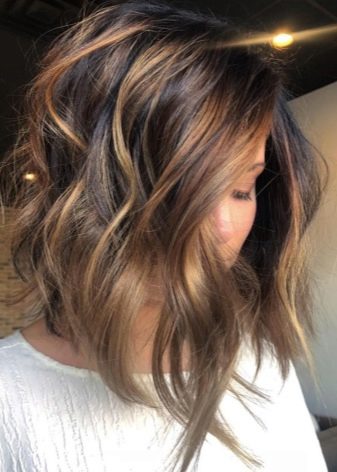
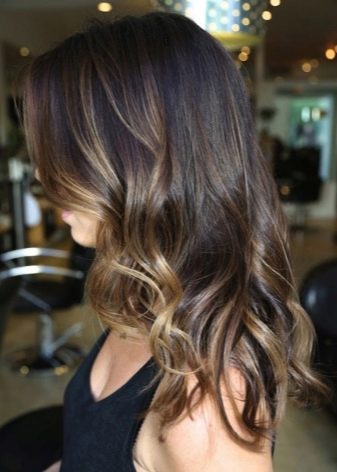
- Partial highlighting - in this case, only bangs or several strands are painted, usually near the face. Although there are possible options for tinting curls on the top of the head or on asymmetrically trimmed areas of hair. This option is optimal for owners of medium length hair.
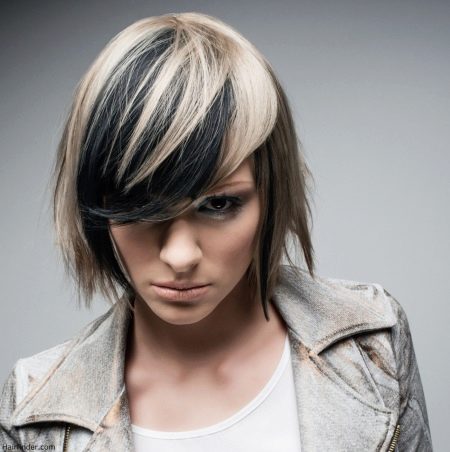
Care
Despite the fact that the technique of rare highlighting refers to gentle, still part of the hair is exposed to aggressive coloring pigments, so the strands after dyeing can be dry, brittle and lifeless, which significantly impairs the overall appearance of the hair. To avoid this, it is necessary to regularly conduct healing and restorative procedures for the hair - for this you need to use professional grooming complexes (masks, balms and oils).
So that the resulting shade pleases you as long as possible, try to avoid any thermal effects - It is better to dry your hair naturally or in the cold blow mode. But styling with curling irons and irons should be minimized at all, since heating makes the shade more dull and weakly expressed, with rare highlighting this can negate all efforts to color the hair.
Well, of course, pick up shampoos and conditioners designed specifically for colored hair - they do not contain sulfates, because they allow the color to maintain its depth and saturation for as long as possible.
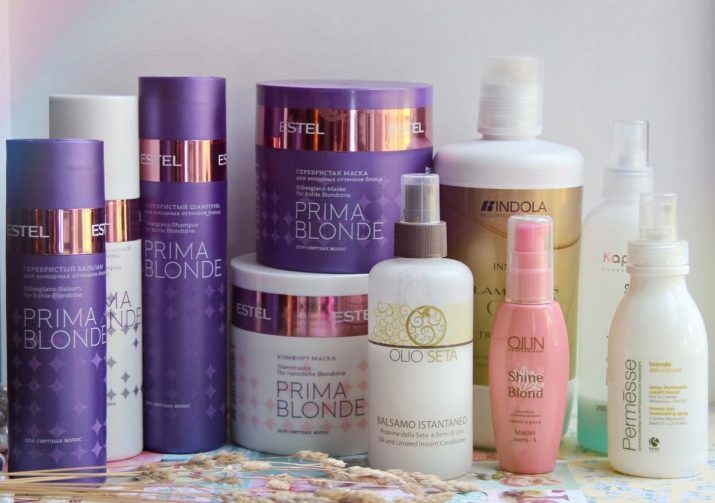
Good examples
Rare highlighting is a technique that allows you to create stylish effects on your hair, emphasizing the eccentricity of nature, gives the appearance courage, audacity and expression.

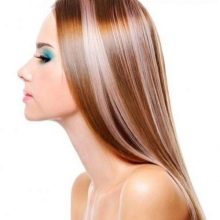
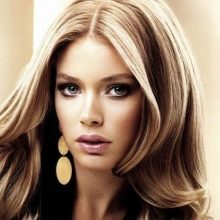
Such dyeing harmoniously looks on light, blond and dark hair, and tinting can be as natural and contrasting as possible.
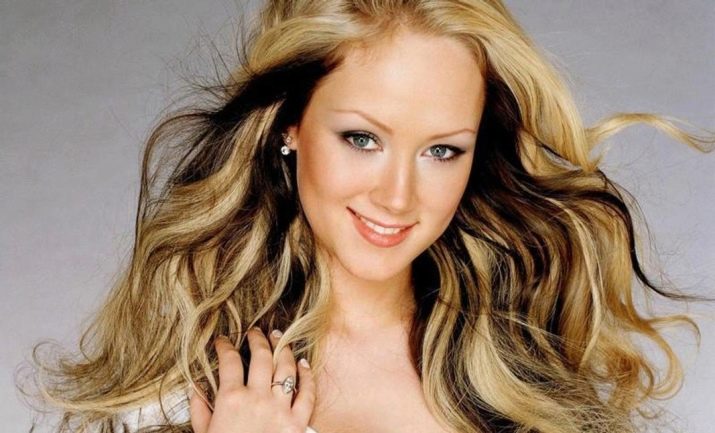


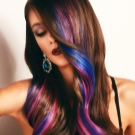
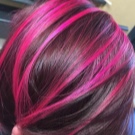
On how to do hair highlighting, see the next video.
